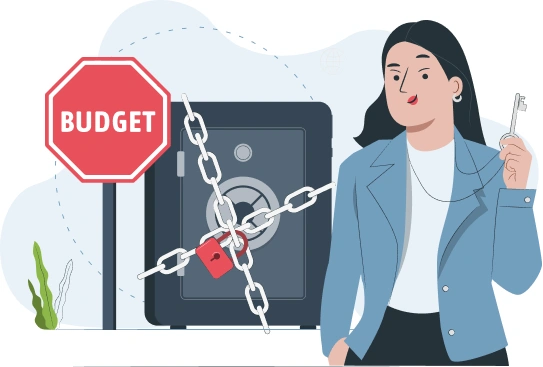Budget-Based Ecommerce Development:
Why Is It Vital to Talk About Your Budget

Budget-Based Ecommerce Development:
Why Is It Vital to Talk About Your Budget
Share post
In business, open communication is foundational to building strong, effective relationships. Yet, one topic often met with hesitation is budget. Our clients frequently shy away from disclosing their budget upfront, fearing it might lead to higher costs or limited options. However, discussing the budget openly can be one of the most beneficial steps in ensuring a successful project outcome. In this short article we will talk about how and why budget discussions are crucial at the project discovery stage.
Table of Contents
ToggleDiscussing the budget at the beginning of a project helps set realistic goals and achievable timelines. When both parties are aware of financial constraints, we can align your expectations accordingly, reducing the risk of over-promising or under-delivering.
One of the most frequent mistakes businesses make is avoiding disclosing their budget before they get an estimate from an IT contractor. They usually hope that the estimate for the required feature development will be much lower than the budget they have in mind and thus try to save a fortune.
The truth is, this is usually impossible. This might be possible only in one situation – when you try to outsource to inexperienced developers who are ready to set their pricing low with a goal to sign a contract. As a result, you get a low-quality product that does not cover the scope or, which is even worse, does not meet the requirements at all.
Budget clarity allows project managers to outline what’s feasible within the given resources, helping avoid misunderstandings or disappointments as the project progresses. By being upfront, we can collaboratively shape a project that meets needs without stretching beyond financial boundaries.
A clear budget enables us to allocate resources effectively, prioritizing the most critical elements of the project.
We always ask our clients to present the scope for the project, which might include 3 to 10 or even more required features prioritized in order from the vital to desired and additional ones.
Being aware of the budget and having the full scope at hand we are able to give feedback and state which part of the scope we can provide in full and what features can be implemented in the simplified version. Along with this, after the analysis we can underline some points from the list as the ones we do not recommend including to the final scope, since they can’t be provided within the given budget.
Lowering the quality of the final product in order to cover the full scope and stay within the budget – this is NOT how we approach the business.
With a well-defined financial framework, we can help our clients identify and focus on the highest-impact features or services, ensuring value is delivered where it matters most. Budget insights also give us the possibility to offer tailored solutions, adapting our approach to maximize output within the budget. This strategic resource distribution often leads to more efficient use of time, materials, and manpower, ultimately enhancing project outcomes.
This is as simple and clear as a Triple Constraint principle which is fundamental in project management today. It highlights the balance between three critical elements that influence the project success: Budget (Cost), Quality, and Scope. Any change to one of these elements will impact at least one of the others.

Engaging in honest financial discussions can establish a more transparent and trustworthy relationship between client and service provider. Openness about budget allows both parties to collaborate more freely, addressing challenges and exploring solutions together. When you feel confident in sharing your financial limits, we as providers can better accommodate your needs, often resulting in creative problem-solving and flexible project adjustments. This transparency fosters a culture of mutual respect, where both parties are committed to achieving the best possible outcome.
Open budget discussions may seem daunting, but they are integral if we want to achieve successful project results. By setting clear expectations and being transparent, we can work together with our clients more effectively. Sharing your budget helps us tailor solutions to your unique needs, use resources wisely, and aim to give the best value possible. In the end, being open about finances turns our relationship into a partnership that leads to better results and long-term success.
Share This Article

 Magento Security Issues: Common Vulnerabilities You May Face In 2025
Magento Security Issues: Common Vulnerabilities You May Face In 2025
An honest talk about the budget saves time! Anton Zhuk, Managing Director at Whidegroup